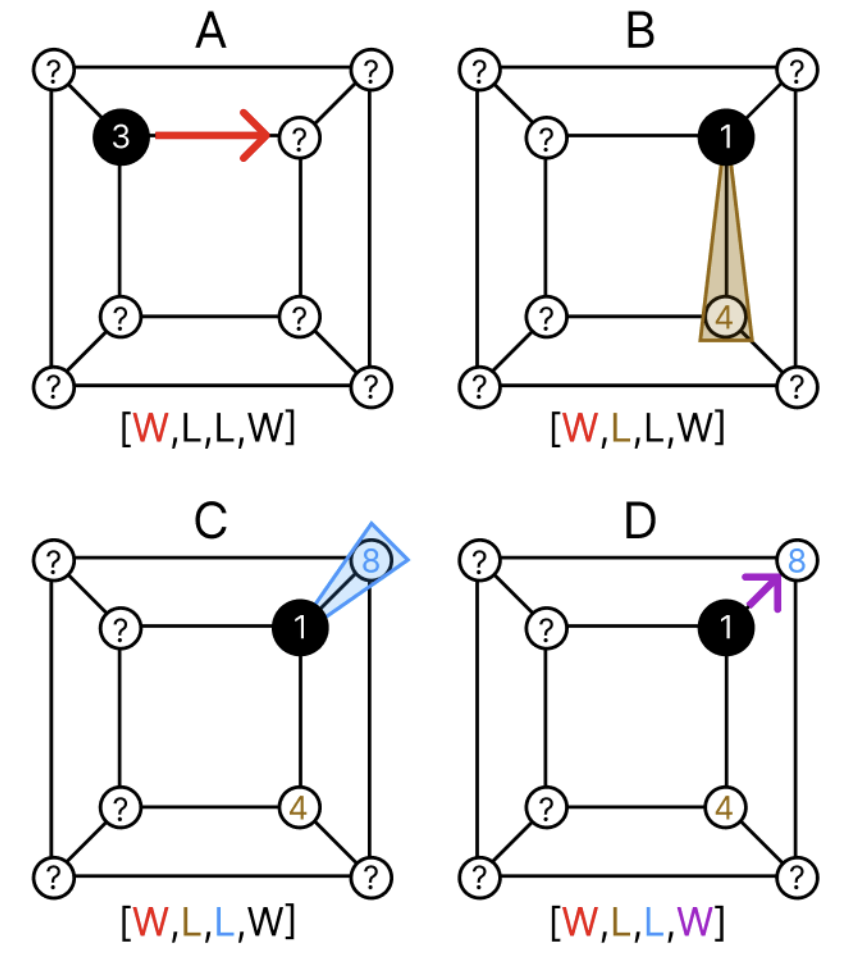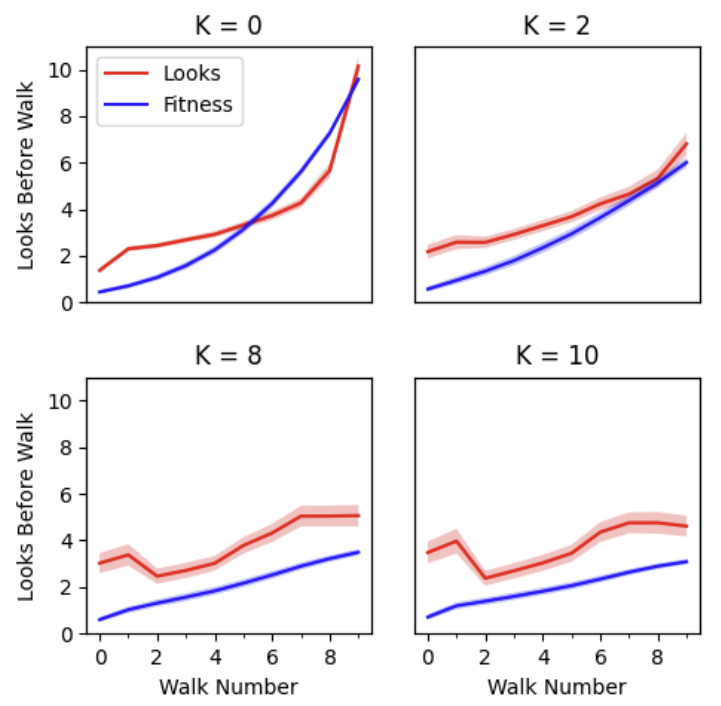Evolution of Developmental Strategies
Project Overview
As part of a research team at Rose-Hulman, I helped develop an abstract computational framework to investigate how evolution shapes developmental strategies. My primary contributions focused on implementing the NK fitness landscape model and analyzing the patterns of exploration and exploitation that emerged from our simulations.
Our research revealed fascinating insights into why certain developmental processes, like adolescent exploration and sensitive periods, may have evolved. By simulating organisms navigating through environments of varying complexity, we demonstrated that evolution naturally selects for time-sensitive developmental strategies that balance exploration and exploitation.
The computational framework I helped develop provides a new way to study the relationship between evolution and development, offering insights that would be difficult to obtain through traditional biological studies due to the vast time scales involved.
Screenshots


Technologies
NK Fitness Landscapes
Understanding the environment complexity:
Low K Value (Simple)
Smooth fitness landscape with few local optima
High K Value (Complex)
Rugged fitness landscape with many local optima
Developmental Strategies
Evolution of time-sensitive exploration strategies:
Early Life (High Exploration)
High randomness, discovering environment
Mid Life (Transition)
More directed exploration, using knowledge
Late Life (Exploitation)
Exploiting optimal solution found
Key Features
NK Fitness Landscape Implementation
Created a flexible implementation of NK fitness landscapes with variable parameters to model environments of different complexity levels for evolutionary simulations.
Time-Sensitive Developmental Strategy Model
Developed a computational framework that allows organisms to change their exploration-exploitation balance throughout their lifetime, mimicking real developmental phases.
CUDA-Accelerated Simulations
Implemented parallel processing using CUDA to accelerate simulations, allowing us to test thousands of generations across multiple parameter settings efficiently.
Multi-Parameter Analysis Framework
Built a comprehensive analysis framework to measure the impact of various parameters on evolutionary outcomes, including environment complexity, mutation rates, and selection pressure.
Data Visualization Tools
Created custom visualization tools using Matplotlib to represent complex multidimensional data from evolutionary simulations in an intuitive and informative way.
Research Findings
Environmental Complexity Drives Development
Higher environmental complexity (K value) leads to the evolution of more sophisticated developmental strategies with distinct phases.
Adaptive Exploration Patterns
Organisms evolved to explore more early in life and exploit more later in life, with the transition timing optimized based on environment complexity.
Sensitive Periods Emerge Naturally
Distinct sensitive periods for learning emerged from our simulations, resembling critical developmental windows observed in nature.
Look-Before-Walk Strategies
Organisms evolved to invest in information gathering ("looking") before taking actions ("walking") in complex environments, balancing exploration costs and benefits.
Research Team
Jacob Ashworth
Yujung Lee
Jackson Shen
Edward Kim
Dr. Jason Yoder